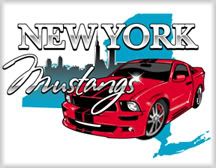 One problem domestic auto makers need to overcome is the perception that consumers have of lower quality. Despite reports and surveys by the likes of JD Powers, that show domestics to be on parr with foreign auto makers in quality for at least a decade. It's this perception and the aditional perception of value that are hurting domestic brands.
One problem domestic auto makers need to overcome is the perception that consumers have of lower quality. Despite reports and surveys by the likes of JD Powers, that show domestics to be on parr with foreign auto makers in quality for at least a decade. It's this perception and the aditional perception of value that are hurting domestic brands. I was watching John McElroy on Autoline Detroit Sunday morning and he discussed this. And it's refreshing to hear a mainstream automotive journalist speak the truth. But how can domestic brands change these perceptions of quality and value? Well in my opinion there are a couple of steps.
I was watching John McElroy on Autoline Detroit Sunday morning and he discussed this. And it's refreshing to hear a mainstream automotive journalist speak the truth. But how can domestic brands change these perceptions of quality and value? Well in my opinion there are a couple of steps.First lengthen base warranties from 3 year/36,000 miles to 5 year/50,000 miles. If the quality is there, expenses should't rise too far. Hyundai and Kia have 10 year/100,000 mile warranties and that helps boost perception of quality. If a manufacturer is willing to back up it's product, it promotes a perception of quality and value. Chrysler did this 20 years ago with the 6 yr/ 60,000 mile warranties it offered. Hell, my first new car was a Ford Festiva with a 6 yr/60K warranty !
Second stop the incentive wars. No journalists talk about how much foreign manufacturers are "putting on the hood" to sell vehicles, but just go through the paper or watch TV and you'll see for yourself. Toyota and Honda run month long "Clearance" sales and Hyundai is currently offering three times as much money in incentives on the Sonata, than Ford is offering on the Fusion. The constant incentive battles amongst domestic brands do more dammage than good.
Third stop lobbying so hard to prevent further government regulations on emissions, safety and fuel economy. These same issues are concerns for foreign automakers, but the public perception of "Detroit Dinosaurs" fighting to make thirsty and dirty gas guzzlers is the result. While Toyota sells more SUV models than many other manufacturers ( Land Cruiser, FourRunner, Highlander , Sequoia, Rav4 and now the FJ Cruiser, plus the Lexus clones of these) Nissan isn't one to be left out either ( Pathfinder Armada, Pathfinder, XTerra and Murano, plus Infinity clones.) But it's Ford and GM that get pointed out by environmentalists, because of their dominance in the large vehicle segment. Ford's "Driving Innovation" campaign is a start, and their research and development programs have produced some promissing concepts that showcase this technology.
Fourth, bring new exciting vehicles to market, with styling and technologies that equals or beats foreign competitors. Chrysler learned it needed to take some risks, and we can all see how that's working for them. Sure they had a bomb with the Crossfire, but look at the 300/Magnum/Charger and the upcoming Caliber. Ford and GM need to take a few risks. I've pointed to some of their concepts like the Reflex, Faction and Iosis as models that I see great potential. Ford has the technology with Hybrids, Flex Fuel, Diesel and Hydrogen powertrains, as well as systems like their Hydraulic Launch Assist that could make a world of difference in consumer perceptions.
I'm no expert, but there are some common sense points here. I've talked about Ford's opportunities with flexible production facilities and shared components/platforms in the past. I see a new B-Segment platform ( the Euro Fiesta) giving Ford the chance to try niche vehicles like the Reflex and Bronco and defray the costs by sharing components and flexible production.
Now is not the time to pull your head in like a turtle and hope the problem goes away, now is the time for action.






No comments:
Post a Comment